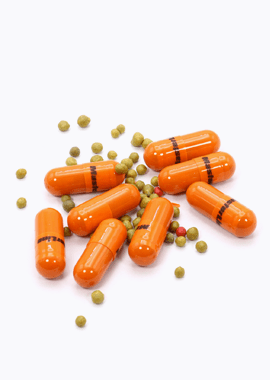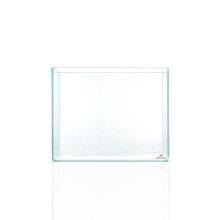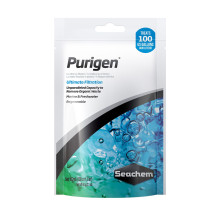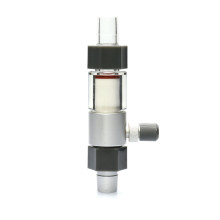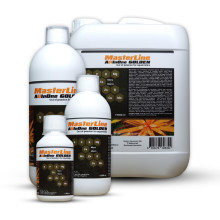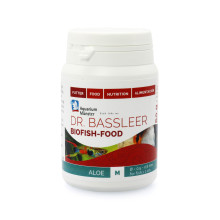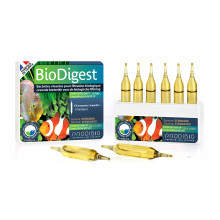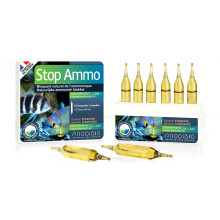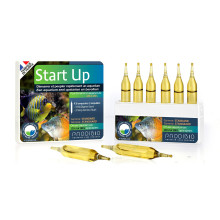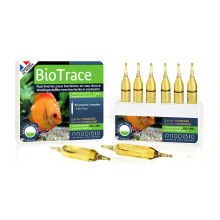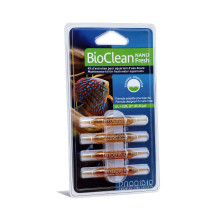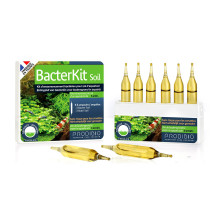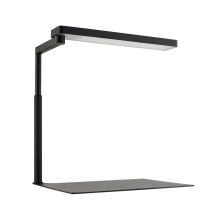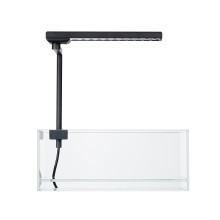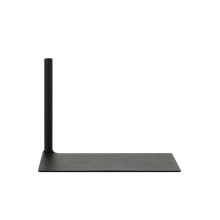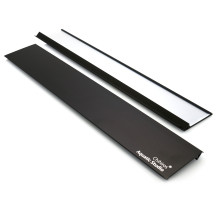Why add CO2 to the planted aqaurium?
In order to grow, plants need 3 things:
1= Light
2= CO2
3= Nutrients
In this artikel all essential information that is needed to add CO2 in the aquarium is explained.
Did you know that the dry substance of plants consist of 50% carbon?
CO2 is the scientific name of the molecule Carbondioxide. This molecule consists of 1 atom Carbon (=C) and 2 atoms Oxygen (=O2). At room temperature and without pressure, this molecule exists in gas form and is also known as Carbondioxyde gas.
Mother nature has developed plants to use the CO2 gas for fotosynthesis. This is the proces where light is absorbed by the leaves chlorofyl and turned into energy in the form of Carbs/Sugars. These sugars serve as energy source for the plant. The sugar molecule Glucose consists of 6 Carbon (C) atoms, 12 Hydrogen (H) atoms and 6 Oxygen (O) atoms. Plants use the Carbon (C) atoms from the CO2 to produce sugars and become energy. Without energy the can not grow and die.
How does it work in nature? Lots of our aquatic plants are marsh plants. In dry-season the leaves are above water. They can absorb CO2 out of the atmosfere and as we know, there is lots of CO2 in the air. In the rain-season the plant leaves will come under water. The leaves transform in a different shape. These new submers leaves are able to absorb the in water dissolved nutrients and CO2 out of the water.
In many cases our aquatic plants origin from area's with soft, acidic water. In soft water (low GH and KH), CO2 dissolves more easily en stays available for absorbtion. This is because it is not binded to Carbonates such as Calcium, Magnesium etc. The dissolved CO2 is available for as long as supply is there and is constantly supplied through water currents. Plants in nature have far more water available to us. In our aquariums there are far more plants per liter compared to nature. This is one of the main reasons a CO2 shortage in an aquarium is easily reached when lots of plants are present.
Adding CO2 in hard water:
In hard water (water with high GH and KH) the CO2 molecule reacts with dissolved salts/carbonates (calcium and magnesium). Therefore it is for plants hardly available. In an aquarium with hard water it is possible that aquarium plants will get their CO2 out of these binded salts. Because the CO2 is taken from the salts, it is possible you see a white residu on the plants leaves (calcium deposit). This is a clear sign of serious CO2 shortage. Not only will the plants be held back in their growth, it also costs them more energy to take CO2 out of the salts.
To counter the binding of CO2 with dissolved salts, we recommend a low hardness for a planted aquarium. (dGH 4-8). In soft water there is in comparison less CO2 needed to add to be free available for plants.
CO2 fertilization and lighting:
As said is CO2 the most important source for creating energy for plants. This is all done under the influence of light. In our aquarium a high light intensity is recommended, because this activates the phoyosynthesis and increases therefore the growth. Lots of light provides a healthy vivid impression of the aquaarium, but also ensures a compact growth of plants. With high light intensity the leaves stay smaller and internoids are shorter. Red plants develop more intense color and foreground plants develop more in width. In the case when we provide our plants with high intensity, it is also important to provide in their increased demand for CO2. In an aquarium with lots of light and little CO2, plants will grow bad. They will grow, but are slowed down due to the lack of CO2. Due to lack of CO2, other nutrients as Phosfates, Nitrates and trace elements are also poorly absorbed. Photosyntesis stops and plants can not produce oxygen to the fish and bacteria wich will result in all kinds of misery. Algae thankfully make use of the extra light and available nutrients.
A commonly known solution for algae problems that originated from this unbalance is: lower the light intensity. In many cases this provides a good solution, because the plants have too much light and too less CO2 at their disposal. We can also turn this around and say: increase the CO2 dosage.
Because plants can not grow without light, they do not use CO2 at night. Make sure your CO2 levels are ok when the light turns on and shut it off during the night, when the plants get to rest.
For the health and stability in the ecosystem, a heallthy plant growth is essential. Healthy plants provide oxygen and vital substances to fish, bacteria and micro-organisms and enrich the natural balance. The total impression of the aquarium is determined by the freshness of the plants and not by the beauty of the fish.
How can we add CO2 to the aquarium:
Now that we have explained that CO2 is of vital importance for aquatic plants, we can supply this to our aquarium in different methods. All methods are explained here:
Bio-CO2 with the yeast method
With a mixture of yeast and sugar, bacteria can produce CO2. This is one of the cheapest ways to add CO2, but it comes with many disadvantages. It is a bit of work, it is impossible to provide a constant dose. Fluctuations in CO2 levels are not wishable and you need to check the producing every week. Also it is hard to shut off during the night and can produces bad fumes.
CO2 from fire extinguishers
Unsafe, questionable quality.
CO2 from electrolysis / Carbo plus
By putting a current through a carbon plate, CO2 is produced. A carbon plate looks unpleasent and is impossible to dose the right amount of CO2. Also the plates need to be replaced regularly.
CO2 from tablets
There are CO2 tablets available that you can place in a small container on the edge of your aquarium. They slowly release CO2, but also it is impossible to get the dosing and looks not that pretty.
CO2 from liquid
In the artikel above we have clarified plants need Carbon. There is a Carbon source on the market in liquid form, also know as "liquid carbon". This contains a Carbon that is usable for aquatic plants. It is easy to dose and plants will do better. It also inhibits algae growth, but can be harmfull for mos-types or shrimps. In the long term it can be quit expensive. > more EasyCarbo
|
CO2 from gas bottles
|
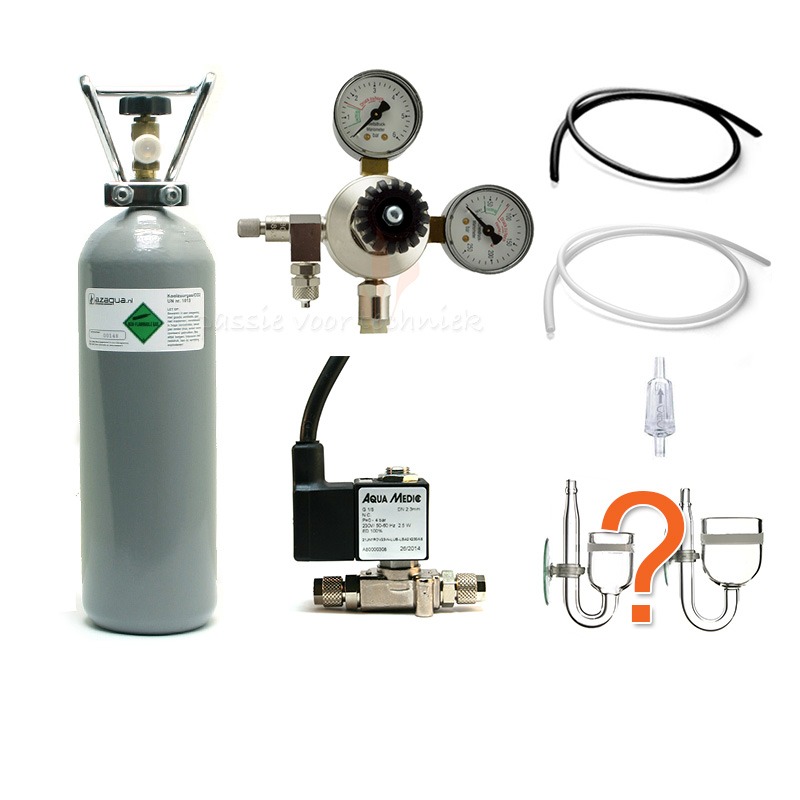 |
How do we get the CO2 into the aquarium water dissolved?
CO2 ladder
The CO2 bubbles are easy to count, because it is about a ladder to the top reels, and slow to resolve. This CO2 ladders are not pretty, solve the CO2 moderately, but are cheap.
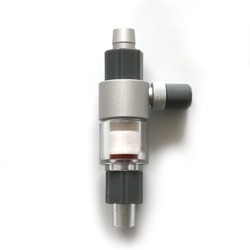 CO2 atomizer
CO2 atomizer
A good solution to reduce CO2 in the aquarium water to solve is a CO2 atomizer. The atomizer consists of a bruissteen, and in the hose of the filteruitstroom be placed. The passing water takes the CO2 bubbles. A very good solution to keep the technology out of sight to process, and yet the CO2 well to dissolve and distribute in the aquarium water, and are relatively inexpensive. A disadvantage is that the CO2 bubbles are carried by the filteruitstroom and annoying in the aquarium will be distributed. Another disadvantage is that you cannot see when it may need cleaning and also the high required pressure gas pressure can soon be considered a disadvantage.
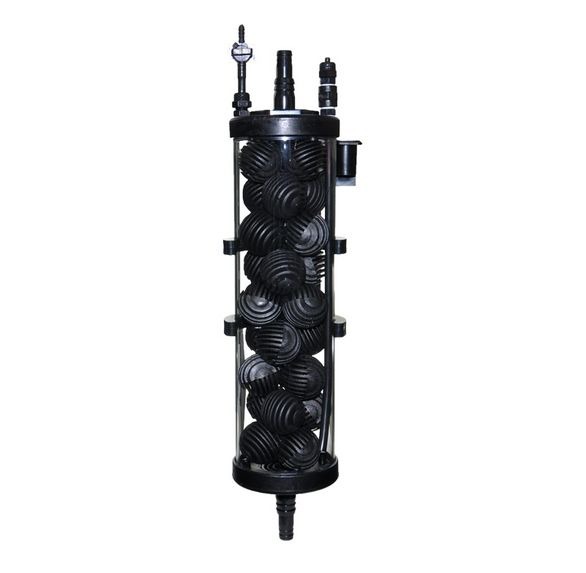 CO2 reactor
CO2 reactor
A CO2 reactor is also a convenient solution for CO2 as completely as possible to dissolve in the aquarium water. This is also after the filter is inserted in the aquariummeubel and in the passing water, the CO2 is as much as possible, resolved. Also this is a good, cheap solution, and the technique is nicely tucked away.
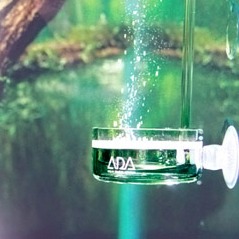 CO2 diffuser
CO2 diffuser
A good CO2 diffuser distributes the CO2 into small bubbles that are easily in the aquarium water be resolved. Thanks to a porous disk, the CO2 is divided into small bubbles. The advantages are that easy to see how much CO2 is added and that this decorative. The disadvantages are that a CO2 diffuser dirt can be, and in the view into the aquarium is present. However, a high-quality and attractively designed CO2 diffuser, can be considered and, for each type of aquarium is a suitable CO2 diffuser CO2 in an appropriate manner to solve. > More CO2 Diffusors
What hulpmidden we can use the CO2 fertilization of the aquarium?
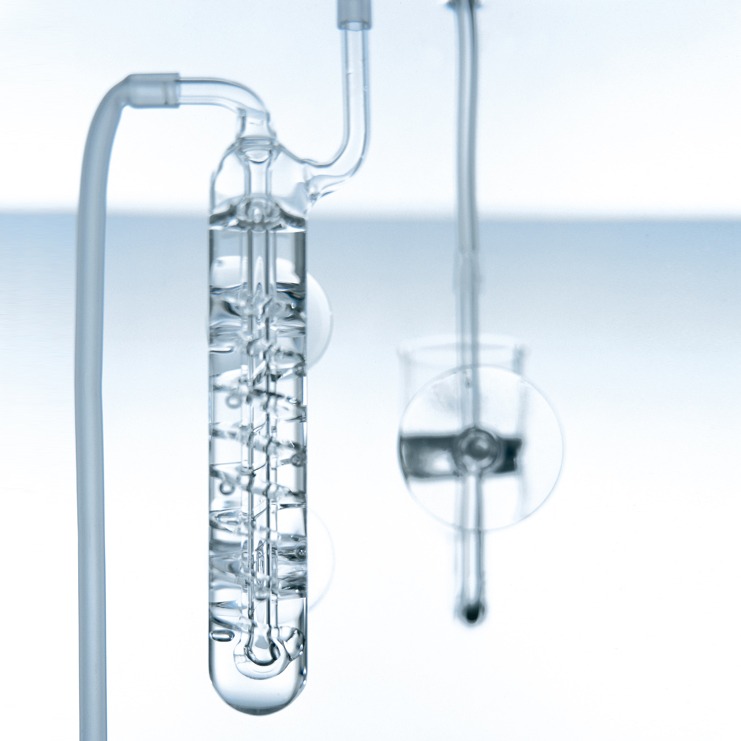 CO2 bubble counter
CO2 bubble counter
With the help of a CO2 bubble counter, we can exactly keep track of how much CO2 we are at the aquarium dosing. This hangs on the outside of the aquarium. By the number of bubbles per second count, and the aquarium plants to observe, we can determine whether we have more or less CO2 to add. A very useful tool! > more CO2 bellentellers
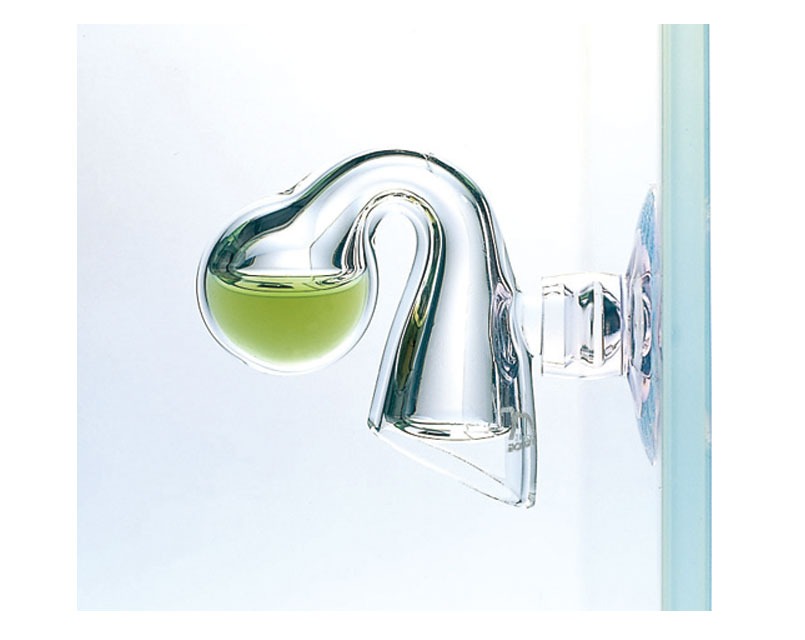 CO2 Drop Checker
CO2 Drop Checker
With a CO2 Drop Checker, we can on the basis of the color of the liquid in this instrument, to determine whether the CO2 concentration is sufficient. Is the color of the indicator liquid is not what it should be, then there may be, if desired, more or less CO2 will be dosed. The advantage is that you at 1 glance can see whether it is good or not. The disadvantage is that this instrument in the aquarium in sight, and that is that the fluid regularly needs to be replaced. This instrument serves as a indicator. Place a CO2 Drop checker is always in the correct place in the aquarium. By, for example, adequate water circulation, the value can differ from the average. And by the Drop Checker above the CO2 diffuser to places, you also get a incorrect reading. > more CO2 Drop Checkers
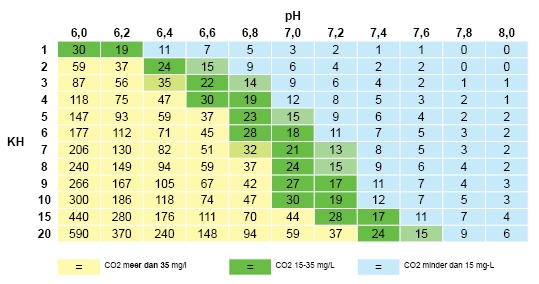 The CO2-KH-PH table
The CO2-KH-PH table
With the help of this table can be the CO2 content of the water are calculated on the basis of the KH and PH. The accuracy of this table is for an aquarium, in which all kinds of substances are dissolved the PH and KH can affect, uncertain. Deal with water what is more acidic, for example, by including tannic acid can have an effect on a correct outcome in this table. The table would then only have to serve as an indication, without being too firm conclusions to be binding. It can, in any case, it never hurts to to send.
What are the ideal values? A pH of 6.8-7.0 in combination with a KH of 4-6 is a common advisory. By viewing the table it is clear why.
 The PH controller for pH-controlled CO2 dosing
The PH controller for pH-controlled CO2 dosing
With a PH controller for the CO2 system to be switched on or off when the preset pH value is reached. The system may for example be set to a pH value of 6.8. When the dissolved CO2 by plants is used and the pH rises to bv, or 7.0, then the pH controller, the CO2 system to enable the pH to decline. The advantage is an almost constant pH value. The disadvantage is that the pH controller should be regularly calibrated in order to accurately continue. An interesting system, often with a nice price tag. Generally unnecessary when the normal CO2 system once it is set up properly on the amount of vegetation and water composition. Without a pH controller, we set the CO2 system up so, so that there is constantly enough CO2 is added to the water. Also displays fluctuations occur and there is a constant supply of CO2.
Where we keep even more in mind when adding CO2?
The best indicators for a proper amount of CO2 in the aquarium water, the aquarium plants. To grow this well? Grow it compact? Give the aquarium plants visible oxygen (assimilation)? If the answer is yes, the chances are that with the CO2 and lighting is well."
Plants grow poorly/not fast enough, to grow with long internodes, there is white deposit on the leaves, there is a lot of algae present? If the answer is yes, is the increase of the CO2 dosage is recommended.
For plants, the lighting is an important factor, but this money also for algae. It is therefore important to first ensure that the CO2 dosage is tailored to the amount of light. Too much dosing of the CO2 is difficult. With more CO2 and good assimilation of the plants is also plenty of oxygen produced for fish and micro-organisms. Most fish and plants do just fine at a very low PH. But it is better to ensure that the PH is between 6.5 and 7.0. Love at all times, all the fish in the holes and prevent big fluctuations!
If we set the illumination intensity to increase the CO2 dosage can be increased. These 2 factors together make for the plant growth. The third factor, namely the nutrients, ensure that the leaves are the right shape, the right colour, new shoots, leaves, strong stems, thick roots develop, flowers form, etc. The amount of nutrients we vote, therefore, on the combination of light and CO2. We go here only to fumble as we know for sure that the lighting is adequate, and the CO2 is more than enough!
If you have any questions or comments? Please feel free to contact us.




